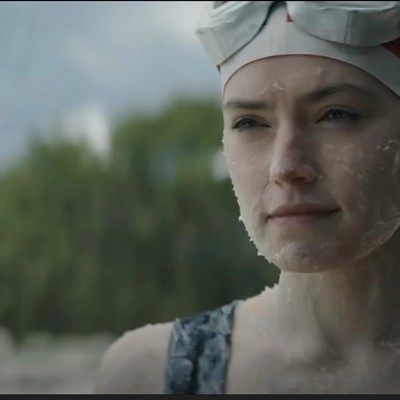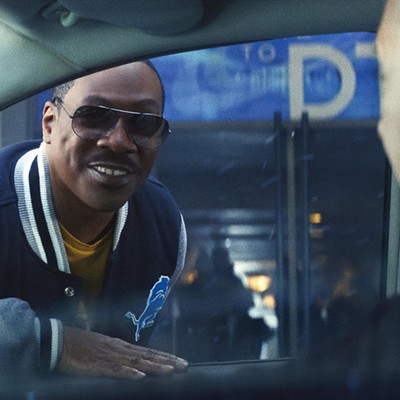Poignant Holdovers a holiday treat
Sorrow and regret are what bind Paul Hunham, Mary Lamb and Angus Tully – sorrow over the death of loved ones and cherished dreams, regret over missed opportunities and unspoken feelings. These three characters are at the center of Alexander Payne's The Holdovers, a bittersweet look at individual battles endured during a time of great turmoil. Sly in its humor and sincere – though obvious – in its poignancy, human dramas of this sort have become increasingly rare in the superhero era of cinema. As such, the film may seem better than it actually is, yet it's hard to overlook the power of its three central performances and the craft with which it is made.
Taking place in 1970, Barton Prep Academy is a private New England school where blueblood families and others of their ilk send their high school age boys. Tully (Dominic Sessa) is dedicated to his studies and feels he's earned the vacation his mother has promised him over winter break. So, it's particularly hurtful when she calls at the last minute to say she will not be picking him up, choosing to spend time with her new husband instead.
Making matters worse is that Professor Hunham (Paul Giamatti) has been assigned to mind Tully and four others who have nowhere to go for the holidays. Cutting and impatient, he is not a favorite among the students, his resentment toward them and their privilege, obvious. The tension between Tully and Hunham only grows when the other students are able to leave campus – via a labored deus ex machina device – and the two are left to their own devices for two weeks. Thankfully, Mary (Da'Vine Joy Randolph), the head of the kitchen, is around to prepare their meals and act as a buffer.
Barriers between the three disappear as they spend time together; secrets are told, hearts are bared and bonds are forged. The story progresses with few surprises, but the three principals are very good, conveying their characters' pain with a sincerity that's genuinely moving. As written by David Hemingson, these are roles that actors crave, not so much for the grandstanding moments given to them but the quieter scenes in which subtlety is required. While Payne makes this in the visual style of 1970s American films, it ultimately lacks the narrative heft of features from that last revolutionary cinematic period. Still, The Holdovers proves worthwhile as a reminder that so many among us struggle with pain we cannot see and how powerful a kind word or gesture can be. In theaters.
Killer too familiar
Imagine Rembrandt doing a paint-by-numbers portrait or Mozart composing music for a half-hour sitcom. That's the kind of disparity in talent and material that's at play with David Fincher's The Killer. An adaptation of the French graphic novel by Alexis Nolent and Luc Jacamon, the movie throughout isn't equal to the talent of its makers. Slickly executed, this tale of an assassin on the run is never dull, its biggest fault being its lack of surprises.
You can tell that we're dealing with archetypes because none of the main characters have names, all of them simply referred to by the character they play. While on assignment in Germany, the Killer (Michael Fassbender) botches a job when he's unsuccessful in terminating the Target (Endre Hules). Thinking he's covered his tracks, he returns to his home in the Dominican Republic, only to find that his partner has been attacked in their home. Though she told them nothing, our anti-hero knows this will not be the last attempt on his or her lives, and goes on the offensive, setting out to kill those who ordered the botched hit before they get him.
As we witness him infiltrate seemingly secure locations, visit his various storage units to gear up for his work or dispatch his victims with cool efficiency, the Killer remains a mystery. At times we get a glimmer of humanity – check out the various aliases he uses – but for the most part, what we get is a man whose work has overtaken him, the requirements of the job having literally crushed his soul. All of this is done matter-of-factly and is at least humorous, if not revelatory.
Of course, this threadbare story is nothing but a clothesline for Fincher to hang his set pieces on. A meticulous and rather cold filmmaker, in a sense this is the ideal milieu for him, and you can't help but be impressed by just how clever the sequences of infiltration, interrogation and annihilation are. The craftsmanship on display – from Fincher's camera placement and movement, the icy hues created by cinematographer Erik Messerschmidt and the razor-sharp cutting of editor Kirk Baxter – makes for a slickly rendered production that's always engaging.
In the end, I was somewhat amused and impressed with The Killer's execution but found the story lacking and the protagonist muddied. I couldn't help but feel that I had consumed a meal of empty calories, leaving me hungry for more substance. Perhaps one of the many mantras repeated in the film should have been, "Always challenge yourself and attempt to exceed expectations." Had this been followed by Fincher and company, this might really have been something. Streaming on Netflix.
Mommy issues and scientific hubris abound in Birth
Uncommonly smart, Laura Mosses' Birth/Rebirth puts a modern spin on the Frankenstein story, with a dose of The Monkey's Paw, to unexpectedly powerful results. The director lets the viewer know from the start this is not for the squeamish as the viewer is immediately treated to the sight of a full autopsy. Meticulously slicing up a cadaver with an icy glare that matches her demeanor is Rose Casper (Marin Ireland). She's well-suited for the isolated, cold basement where this procedure takes place, as she is unfeeling and demanding. Her life is based on facts and procedures, routines and rituals, not allowing her or anyone else's emotions to interfere with her work or life.
Regarded wearily by her co-workers, none of them know of her brilliance or the work taking place in her apartment. Bent on developing a procedure to reanimate the dead, she has absconded with supplies and other unmentionables from the hospital where she works. She's had success with her experiments and is now looking for an opportunity to take her work to the next step. It literally falls in her lap when the body of a young girl named Lila (A.J. Lister) ends up in her morgue. Having contracted bacterial meningitis, her death was sudden and has rocked the world of her mother, Celie (Judy Reyes), a nurse who works in the same hospital Casper does. And when the girl's body disappears, her mother's tenacious search for it takes her to her co-worker's home, where she discovers her daughter in a state somewhere between life and death. While Celie is initially repulsed by Casper's plans for Lila, despite her better judgment she lets her proceed, clinging to the hope that perhaps her little girl can be made to be as she was before.
What elevates Birth above exploitation fare is the intelligence of its script. Adhering to hard science throughout, the movie touches on the controversial issues of fetal tissue use and stem cell research, while the harvesting of spinal fluid and bone marrow through unconventional means speak to the sort of rash rationalizations that are sometimes used with disastrous results. While cautionary tales regarding scientific procedures are nothing new, Birth/Rebirth goes the extra mile by tying it to an effective story of parental terror and horrific codependence. And while its final scene may initially seem underwhelming, upon reflection what it portends is perhaps the most terrifying thing about the film. Streaming on Shudder.





















